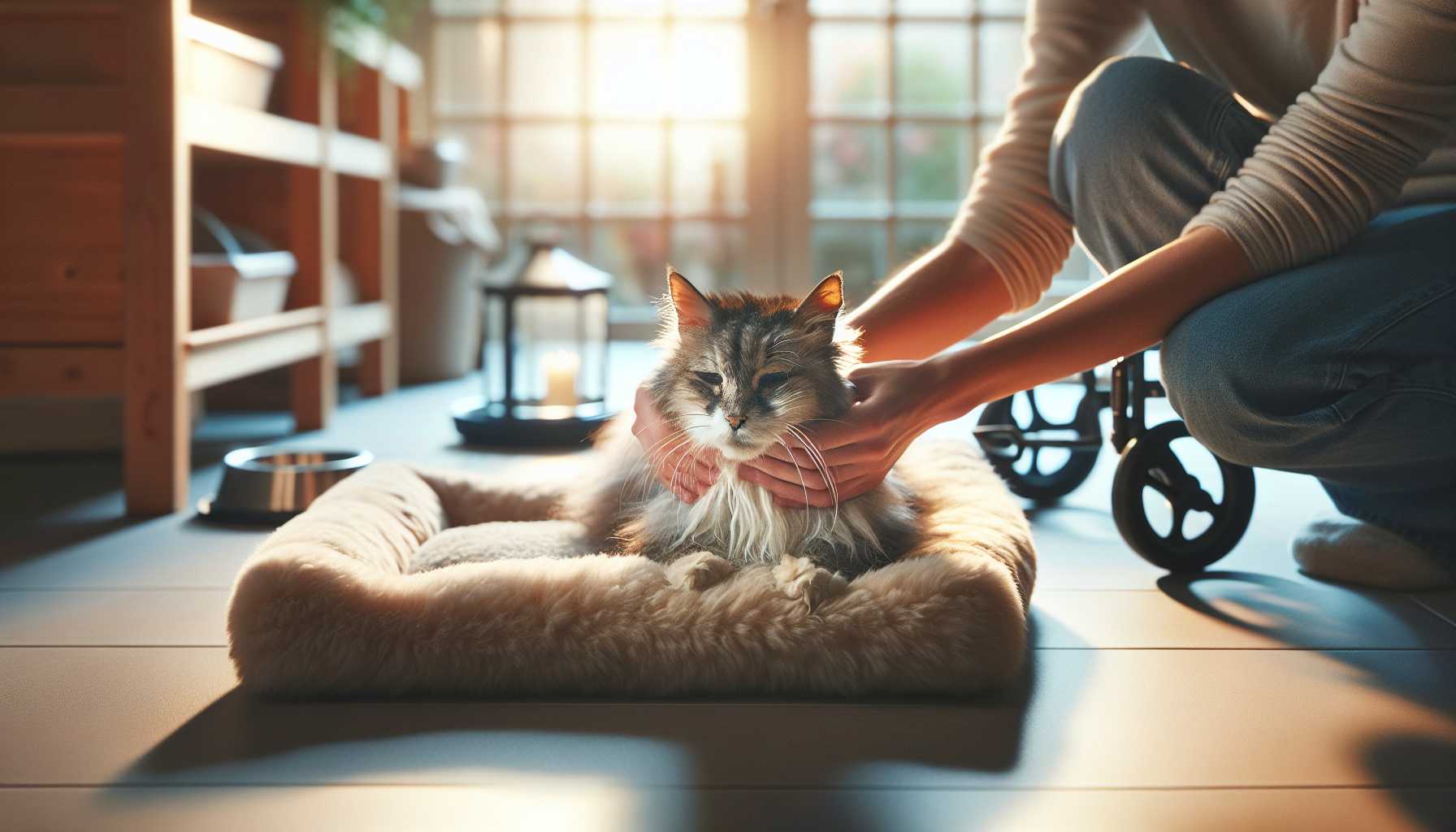The process of watching our beloved cats age is not always easy, and this becomes particularly painful when our feline friends are struggling with discomfort. As a cat owner myself, I understand how heart-rending it can be to watch your cherished furry friend grappled with the agonies associated with aging.
Recognising Signs of Pain in Your Senior Cat
Cats, particularly when they age, lack the ability to communicate whenever they are in pain. However, they do have subtle ways of showing us. These signs might include:
– A decrease in their jumping or climbing
– Changes in their grooming patterns
– Unexpected displays of aggression or retreat
– A lack of enthusiasm during playtime
– Differences in their litter box habits
Natural Ways to Alleviate Pain in Your Senior Cat
Here are some gentle, organic methods to improve the comfort of your aging cat:
Gentle Exercising
Keep your older cat active by:
– Engaging them in short play sessions
– Arranging the furniture in a cat-friendly manner
– Providing them with accessible places to climb
– Offering soft toys for gentle play
Nutritional Support
Pain management begins with good nutrition and a balanced diet, such as:
– Foods rich in Omega-3 fatty acids
– Supplements with glucosamine
– Foods with anti-inflammatory properties
– Nutrients that support joint health
Possible Medical Interventions
There are moments when our aged cats require additional assistance from medical professionals:
Prescription Medication
It’s crucial to always consult your vet on:
– NSAIDs that are cat-friendly
– Supplements to aid joint health
– Pain relief medications
– Anti-inflammatory drugs
Alternative Treatment Methods
Another worthwhile option might be auxiliary treatments like:
– Acupuncture
– Massage therapy
– Laser therapy
– Hydrotherapy
Tips on Creating a Comfortable Home Environment
Turn your home into a sanctuary for healing:
– Offer soft, warm bedding
– Install ramps to make movement easier
– Make sure food and litter boxes are within easy reach
– Maintain a steady, warm temperature
When to Involve Your Vet
Trust your instincts and seek out professional help when:
– The pain appears severe
– There’s a drastic change in behavior
– There’s a decrease in appetite
– Mobility decreases significantly
Tips on Preventive Care
Avoid future pain-related issues by:
– Regular vet check-ups
– Monitoring their weight
– Ensuring proper nutrition
– Encouraging light daily activity
It’s important to note that each senior cat has individual needs. What works for one might not work for another. Patience and love are crucial as you try to find the perfect mix of treatments for your precious pet.
Your senior cat has given you years of love and companionship. It’s now up to you to reciprocate that love by providing comprehensive pain management to make their later years as comfortable as possible.
Are you keen to ensure your senior cat remains happy and comfortable? Begin with these solutions today, and always consult your vet for personalized advice to best suit your pet.
*Noticed any changes in the habits of your senior cat? Share your observations in the comments below – your shared experiences could assist other cat parents facing similar challenges.

